A post about many things beautiful. A library, an art exhibit, a college building, and then a discussion on the philosophical branch of aesthetics.
Let’s say you were to take a walk in Farmington, Maine. You’d start at the corner of Broadway and Main and walk south. You’d continue past the stores and the post office and then the Pierce House. Just as you cross Academy Street, you’d see a large red brick building on your left. That’s Merrill Hall and that’s what I’ll be discussing in today’s post. But before I do that, I’d like to share a story with you.
It’s become quite the routine. We visit the Farmington Public Library to borrow some movies and books, walk around for a bit, and then head home to go on with the rest of our day. I’m used to it – we’re used to it. The thing is, I’ve recently come to think we can make more of our time in town. Why not venture off the beaten path a bit? Why not nose around in some of the local buildings? Why not visit and experience some of the events that are taking place? We put these ideas into action during our most recent visit to Farmington. It seems as if the stars were aligned – everything somehow worked out, one thing right after another.
Cutler Memorial Library
I’ve discussed the library far too often in these posts. I’m assuming that those who are local to the area are familiar with its exterior. I’m sure I’ve posted photos of it before. What about the inside though? Have you ever seen it? It’s truly a magnificent building that’s enveloped in quite a bit of interesting history.
The first library association was established in Farmington in 1865 as a subscription service for its shareholders. This organization failed in 1880, and in 1890 the Farmington Public Library Association was formed, renting space in the local Masonic hall. Founders of this association included John and Isaac Cutler, the latter of whom donated the funds for the construction of this building, which is named in honor of his father, Nathan.
The Cutler Memorial Library’s gray granite came from the Maine and New Hampshire Granite Company quarries in North Jay. Vermont green slate was used on the roof. The polished oak woodwork of the interior was done by Joseph Matthew of Farmington, and the stonework was done by Horace Purington & Co. D.H. Currier of Chesterville did the foundation.
I’ll certainly take some additional photos of the building’s exterior, come spring. For now, let me show you part of the interior. This first photo displays partial paintings of the Cutler gentlemen as well as the large skylight above. This room is known as the Rotunda room. The library building is essentially an “L” that features one room that’s circular. This circular room has a domed window in the ceiling, as you can see below.

This is a more thorough look at the Cutler brothers, John and Isaac, as well as their father, Nathan.
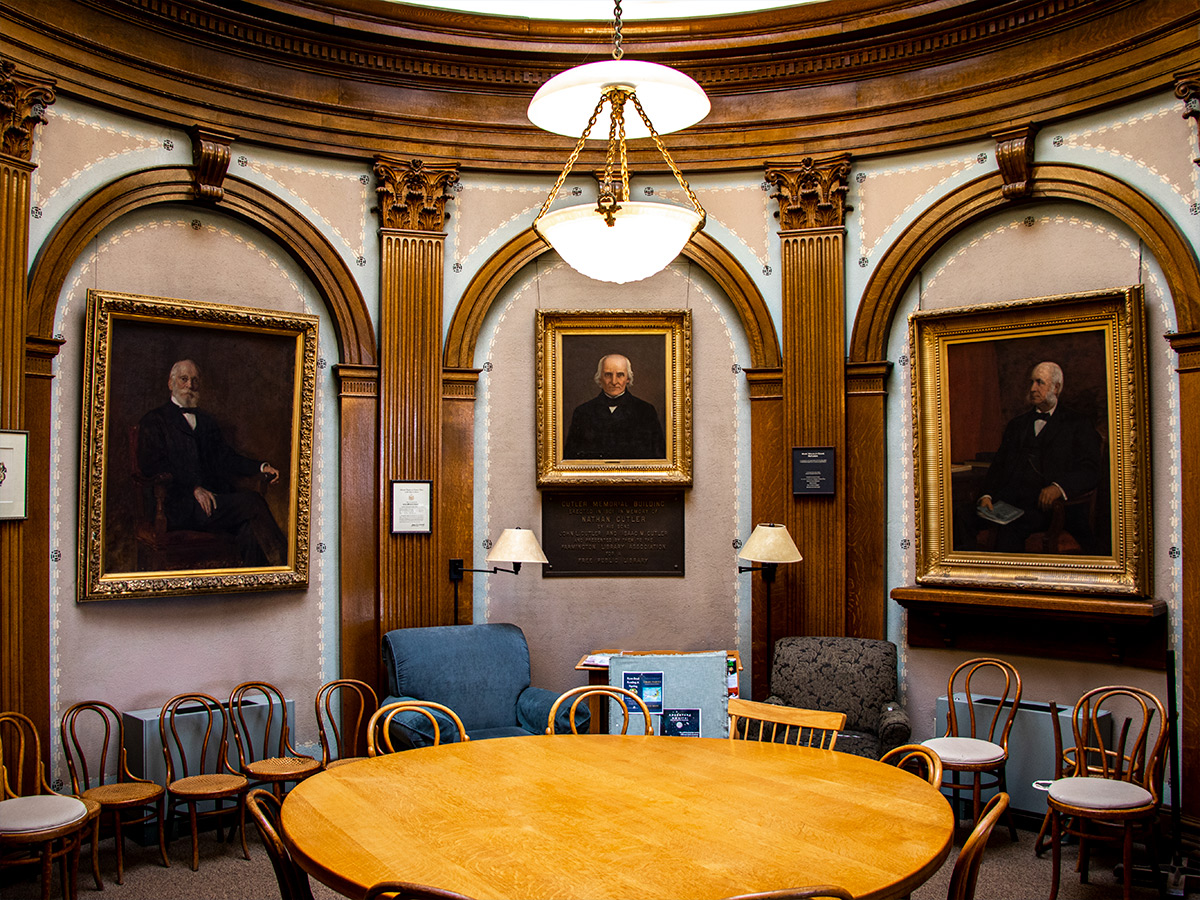
Among many other rooms, there’s also a work/reading room that’s known as the Holman room. I’ll show you two different views of it.
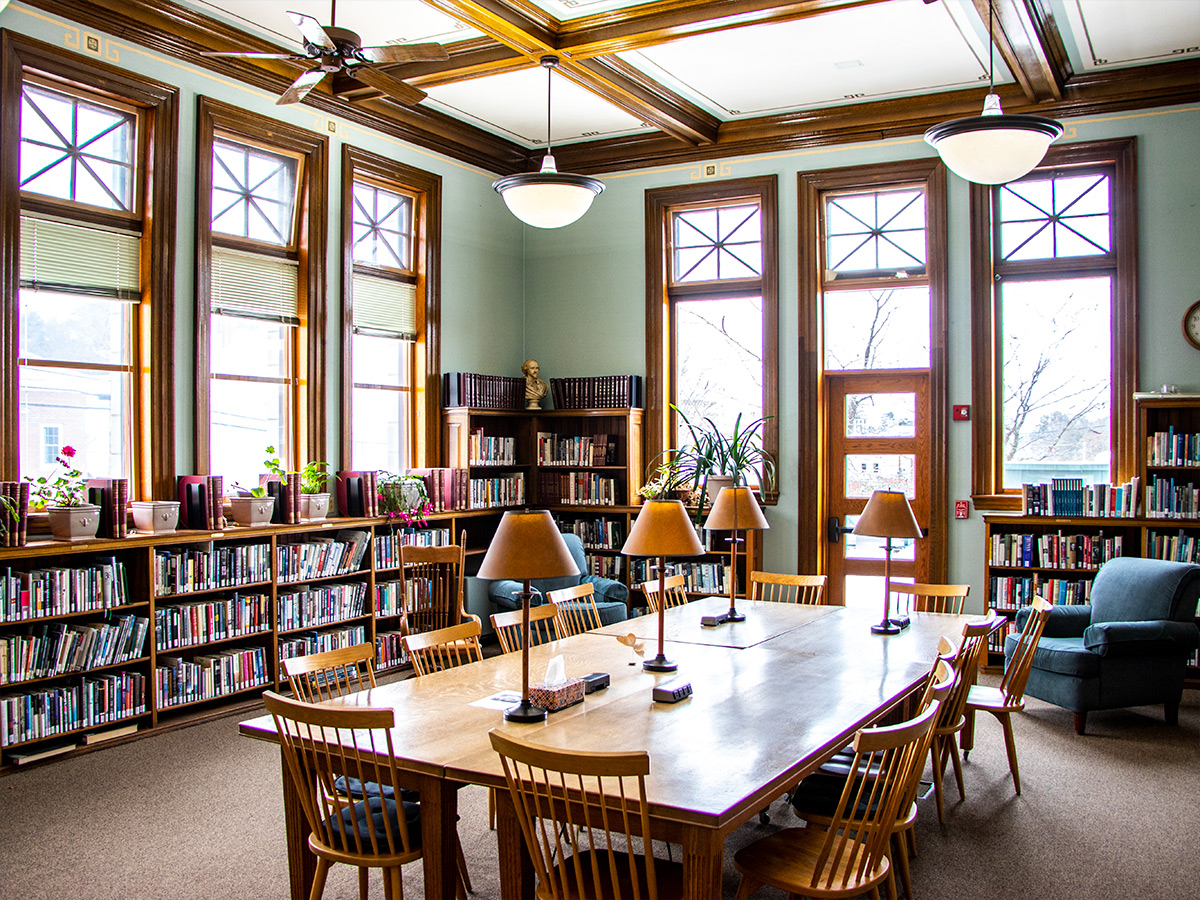
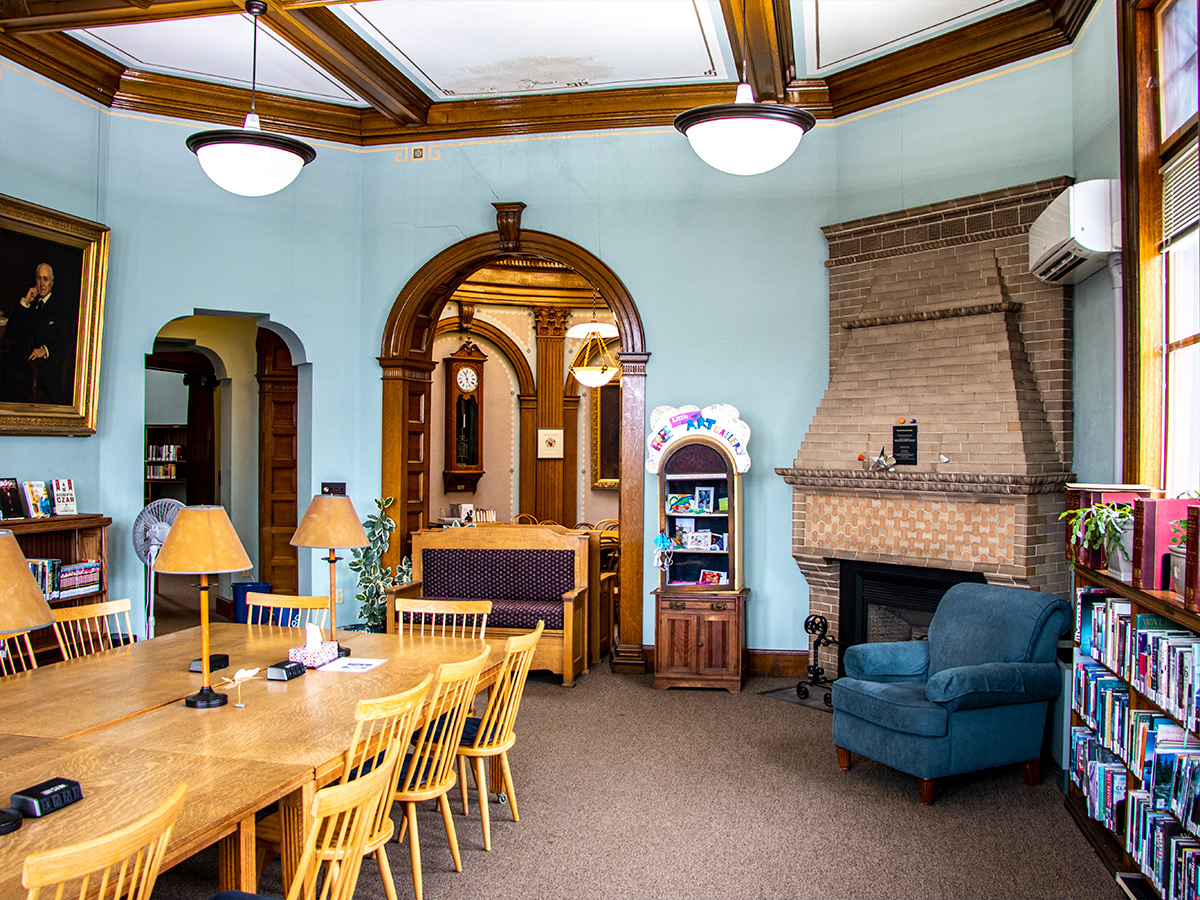
What’s nice to know is that the building is made of granite, so if you happen to be inside reading a good book while the wind outside is howling and the snow is falling, you’ll be as safe as you could possibly be. The library was built between 1901 and 1903 and it appears to be in excellent condition. Its construction is obviously of the highest quality.
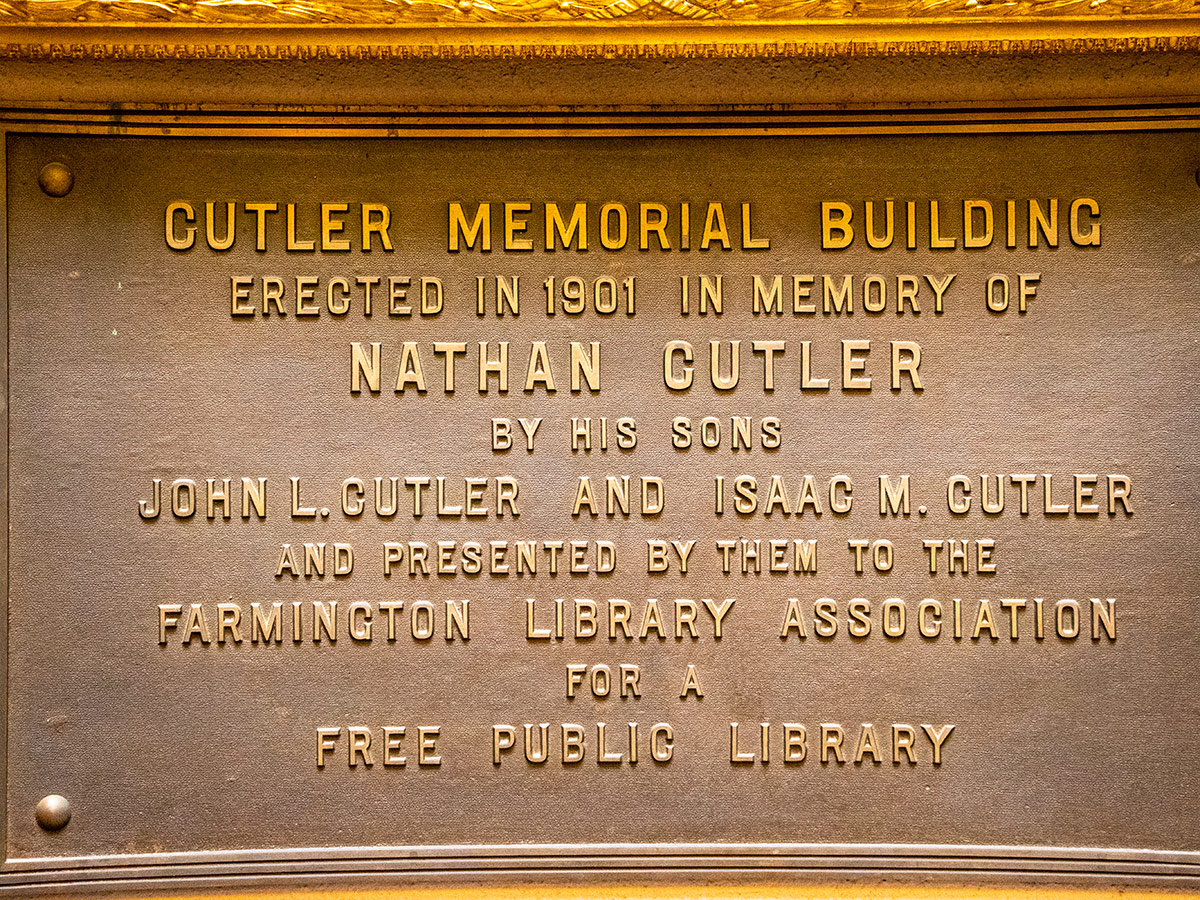
In case you missed it a few photos above, I’ve got a close up of Shakespeare’s bust. See if you can located it in the corner of the room.

What’s very interesting and unique about this building is that it’s got a room with a glass floor. It’s a two-story space. The lower floor is carpeted and is referred to as the Fiction room, while the upper floor is glass and is referred to as the Glass Floor room. The structure holding it all in place seems to be wrought-iron. It’s all very decorative.
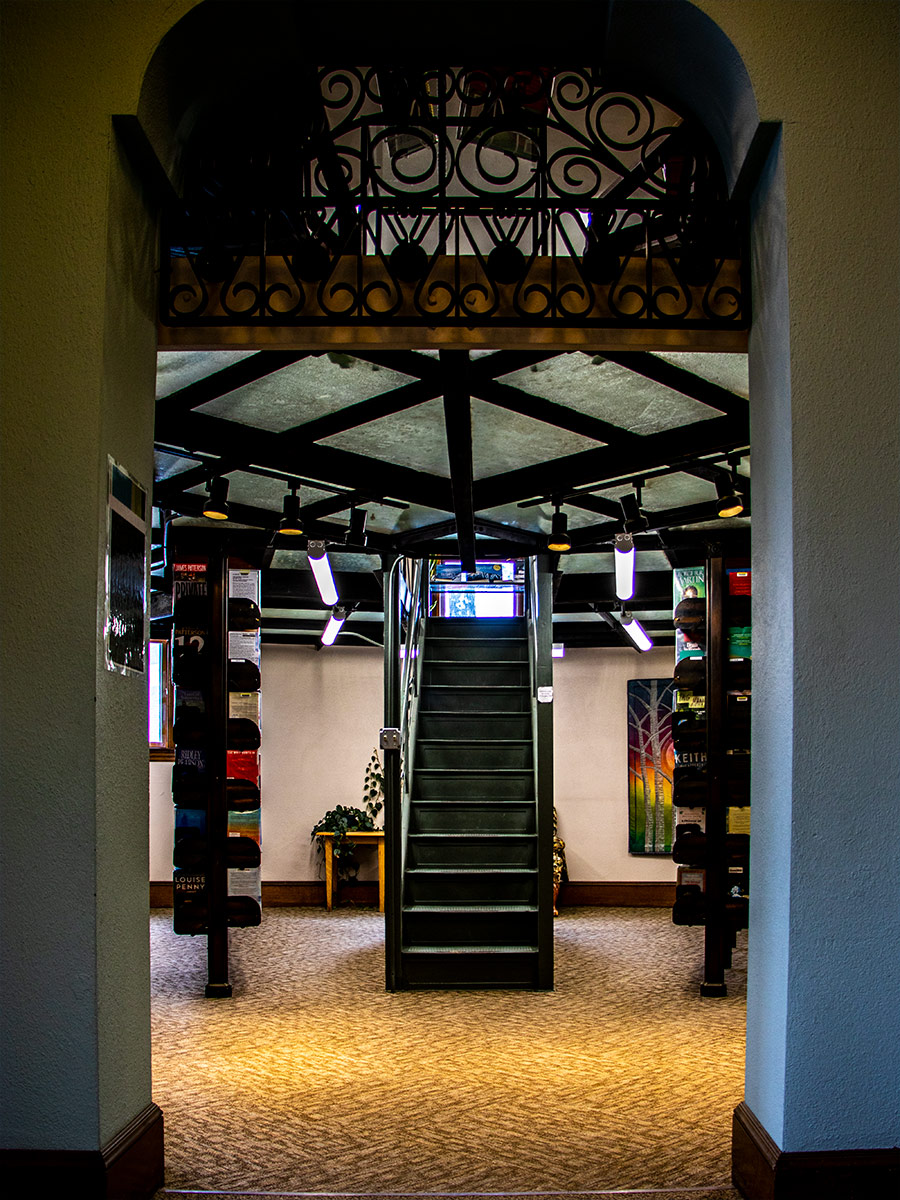
It was a quick visit to the library this day. Laura merely returned a few things and promptly borrowed some more. I did what I could with my limited time. During our next visit, I’d like to get some more detailed shots of that iron.
Markeith Chavous
Before we entered the library, Laura mentioned an art exhibit that was in process in the building next door. That building happens to be the Emery Community Art Center, which is part of the University of Maine at Farmington. The moment she told me of the exhibit, I snapped a photo to mark the occasion. I thought it would be a nice surprise to sneak in and out after we were through in the library. The below image is actually of Merrill Hall, which sits beside the art center.
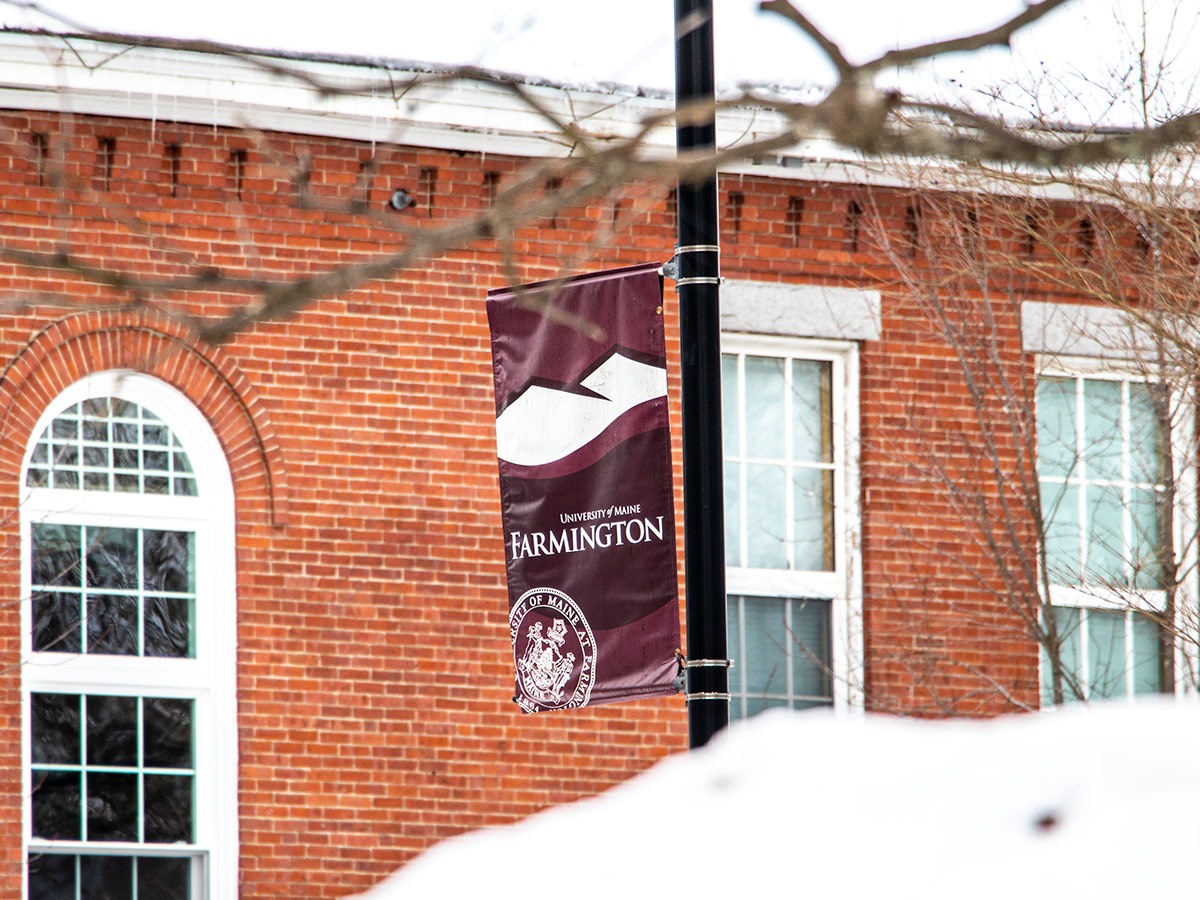
I asked Laura if she’d like to accompany me to the exhibit. It’s not like me to visit these types of events, but I was interested in seeing what it was all about. I assumed it would be similar to the one we experienced years ago – different paintings and sculptures placed throughout a room. We’d slowly wander around until we’d seen them all. Then we’d leave.
In this case, there was no one there but us. It was a large room. There were neither paintings nor sculptures. We sat on one of three benches placed in front of three screens. On each screen was a different presentation. I don’t want to say that they were in any way distinct from one another – they were certainly connected. In the way only an exhibit like this can connect such things. I honestly thought I’d sit for just a few minutes and then get up to leave, but what we saw was more captivating than what I had initially expected. It held me on that bench the entire time. Except for the minute or so it took me to take this photo:

I have to tell you, this is one of my better photos. I’m surprised it came out so well. As you can see, the room was pitch black and the screens were quite bright. Setting the camera so perfectly is a rare skill – one I don’t have. I got lucky.
If you’d like to watch the exhibit, you can do so by clicking on the video below.
The Waves and the Mantram, Part 1
You may also read about the exhibit on Markeith’s website. This is a snippet from his page:
“‘The waves and the mantram, part 1‘ is the first in a trilogy of cinematic triptychs that thread together varied narratives, accounts, images, poems and documents of belief and spirituality; and the environments that surround, impact, and inform those beliefs. It is a slate, an elastic model of being, where semi-narrative associations arise and dissolve, entwined by poetic dissonance and affinity.”
Who is Markeith Chavous? He’s actually an alumnus of the University of Maine at Farmington. He earned his Bachelor of Fine Arts, otherwise known as a BFA, in Studio Art locally and then attended the California Institute of the Arts, where he earned a Master of Fine Arts (MFA) in Film & Video. He’s currently considered a media artist and poet and his works have been presented internationally in Scotland and South Korea as well as nationally in Maine, New Mexico, and California. His poetry has been published in many journals and anthologies. For more on Markeith, please feel free to visit his website.
As I mentioned above, it’s not terribly in my nature to spend any significant amount of time watching an exhibit such as this one. I get antsy when I hang around something too long. I did it though and I’m glad I did. It was very good. I appreciate the work this artist put into his presentation.
Lillian Nordica
I teased this post in my previous one. I asked if you knew who the most famous person was to have come from Farmington, Maine. If you stopped someone on the sidewalk to ask them this question, nine times out of ten you’d hear “Chester Greenwood” as a response. I think that says it all. He definitely was a famous man. Depending on your interests though, there was another person who was substantially more famous than Chester. This person is considered to have been the first American diva, which is to say she was the first famous American opera singer. Lillian Nordica was her name and she was born and lived in a home right on Holley Road, a few miles north of Farmington. The home and property are now referred to as the Nordica Homestead and are open to the public. Besides having 108 acres of field and forest as well as a large barn to explore, the home is now a museum.
Lillian’s history is simply fascinating. She came from very humble beginnings, began learning how to sing in earnest at age 14, and eventually sang professionally in the halls of London, Paris, Milan, as well as many other venues – even the Imperial Opera in St. Petersburg, Russia, known today as the Mariinsky Theatre. If you’ve never heard of Count Leo Tolstoy (Lev Nikolayevich Tolstoy), he was a Russian author (among other things) who wrote historically consequential books, such as War and Peace and Anna Karenina. Leo entertained Lillian and her mother in his palace. Lillian also performed for Czar Alexander II, who was Emperor of Russia, King of Poland, and Grand Duke of Finland, just over a week before his assassination in 1881. The list of remarkable occurrences regarding this woman’s life goes on an on. I really wish you’d read all about them here:
The History of Madame Nordica – The First American Diva
If you’re from Maine, and more specifically, Farmington, you’ll be beyond proud.
In my previous post, I also asked what Lillian’s legacy was, or is. Take a look at this:
The Nordica Scholarship is awarded annually to a singer who is studying in Maine and aspires to a career in classical singing. The winner performs a concert in Farmington on Nordica Day, August 17 in Nordica Auditorium.
As well as…
Her birthplace in Farmington, Maine, is today the Nordica Homestead, a museum and historic site. Nordica Auditorium in Merrill Hall at the University of Maine at Farmington is named after her.
Now take a look at where we just happened to end up after we left the art exhibit. Mind you, this was all by accident. Here’s the story:
Nordica Auditorium
We left the art exhibit and began walking outdoors. To our left was the rear entrance to Merrill Hall, the large beautiful building I mentioned very early on in this post. Since I’ve always wanted to see the inside of this building, we walked right on in.
I suppose we looked lost because soon after entering the building, two women exited an office on the main floor and one of them asked if we needed help. I explained that we were simply looking around as tourists. Both surprisingly became quite excited by the idea of that and insisted we climb to the top floor to visit Nordica Auditorium. We obliged and found ourselves in the middle of a large room with perfect lighting for taking many, many photographs.
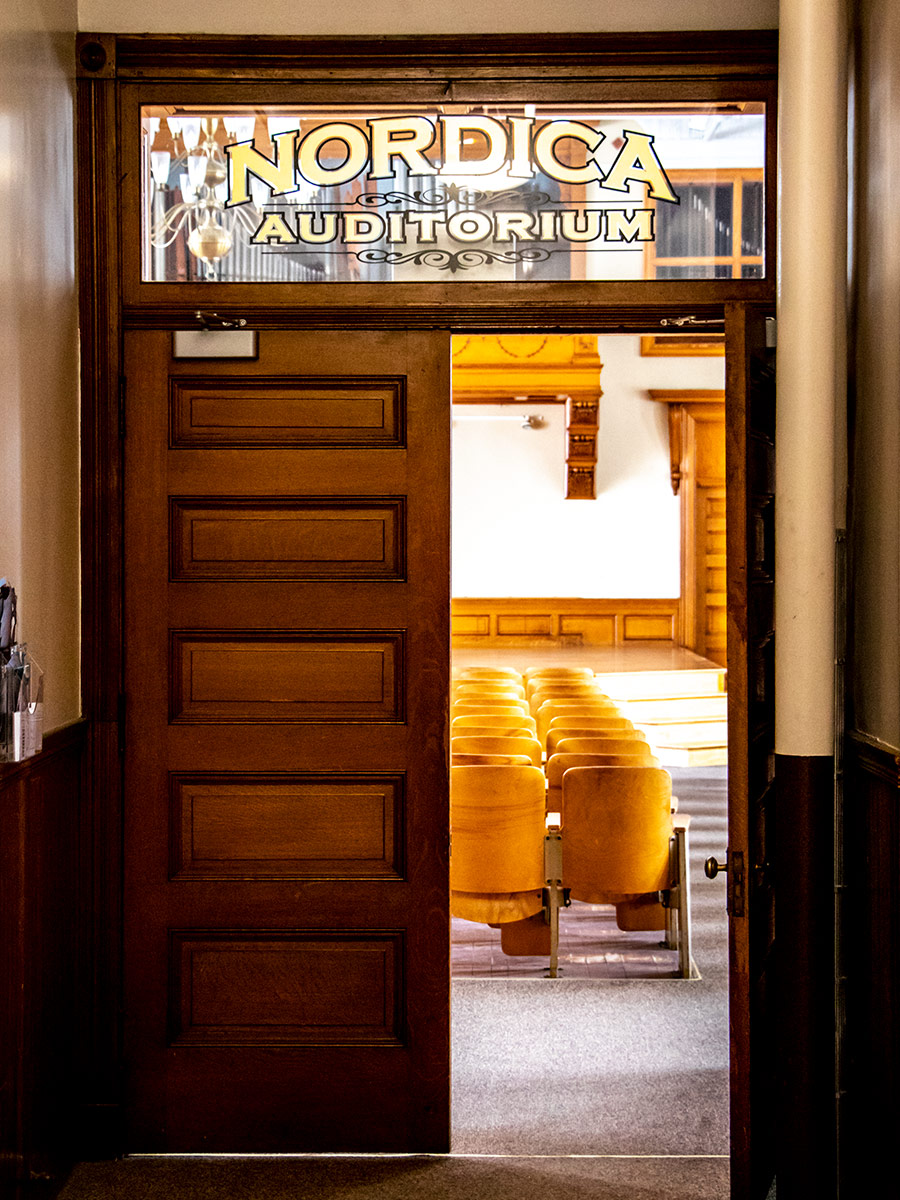
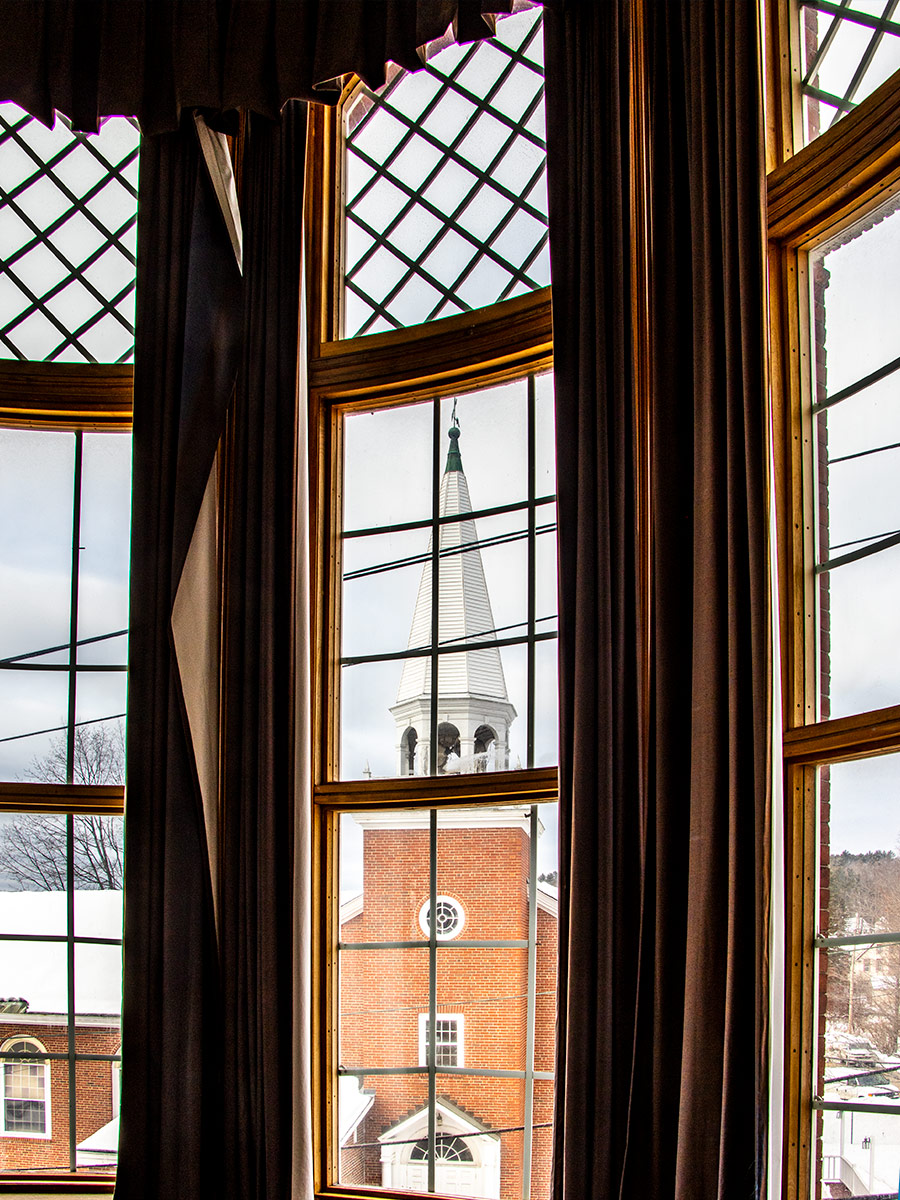
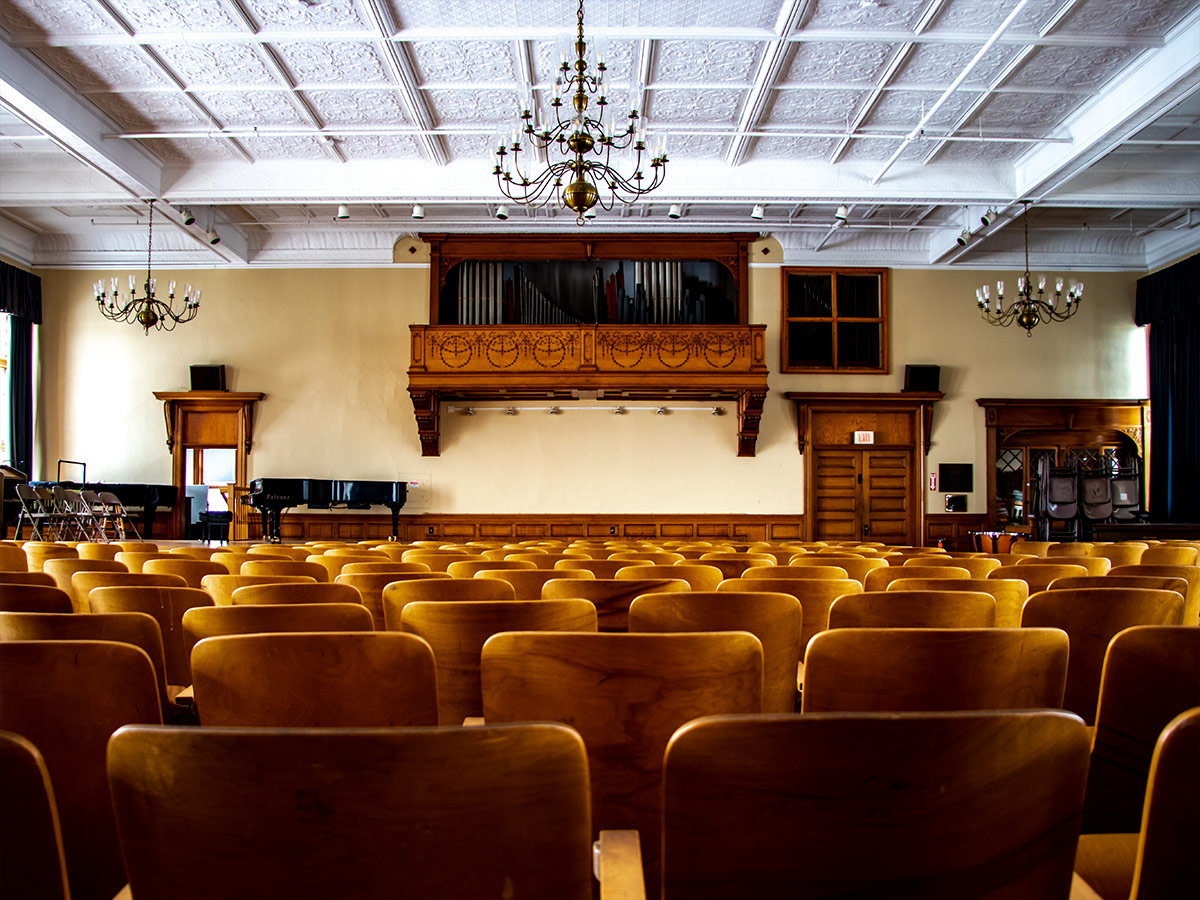
Apparently, this auditorium is a big deal. It hosts many events throughout the year, including musical duos and trios as well as the Nordica Day Concert I mentioned above. Many other events are held in this large room as well. It’s actually quite historic and much of the furnishings are hardwood and of the most intricate detail. I was especially fond of, surprisingly, a radiator. Take a look at the scrupulousness of its construction.
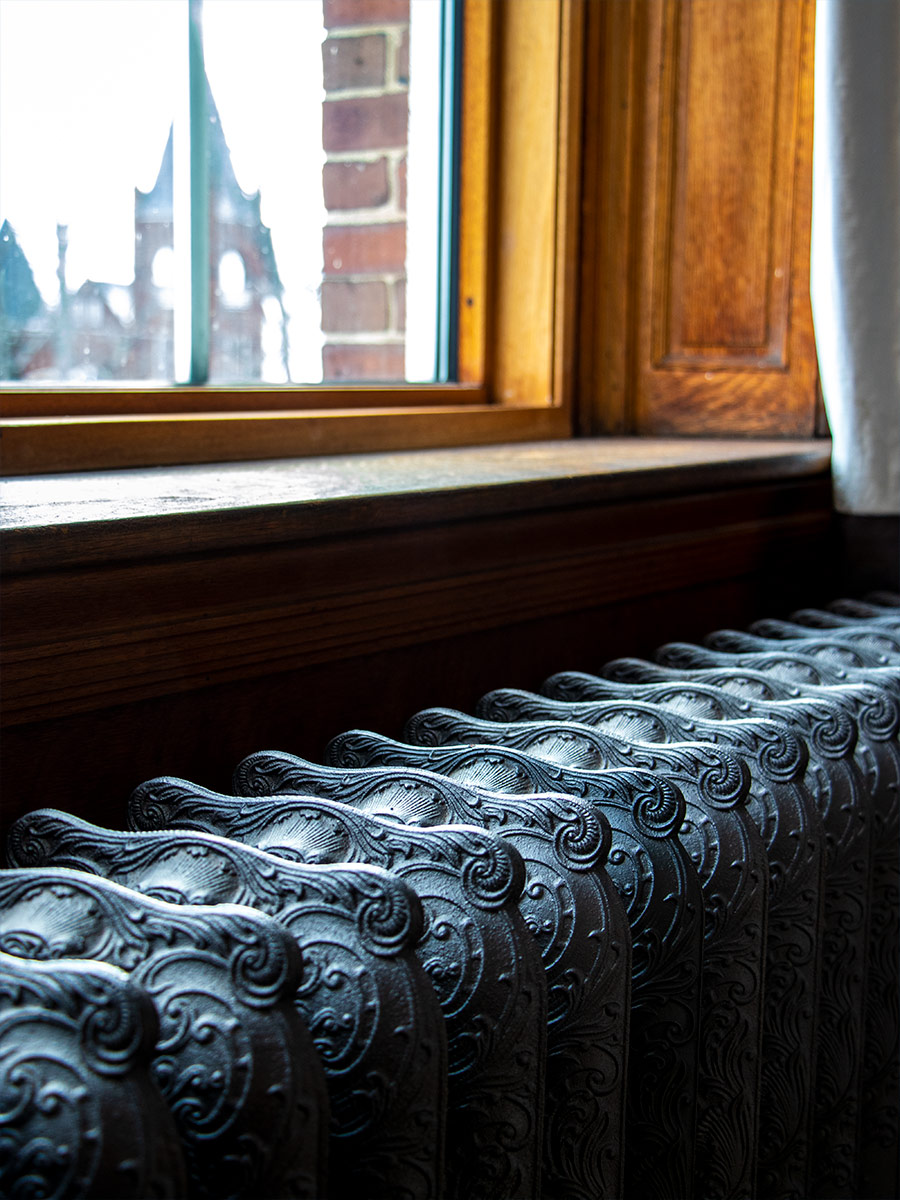

After feeling the warmth this radiator generated, I’m beginning to think I wouldn’t mind having one in my house.

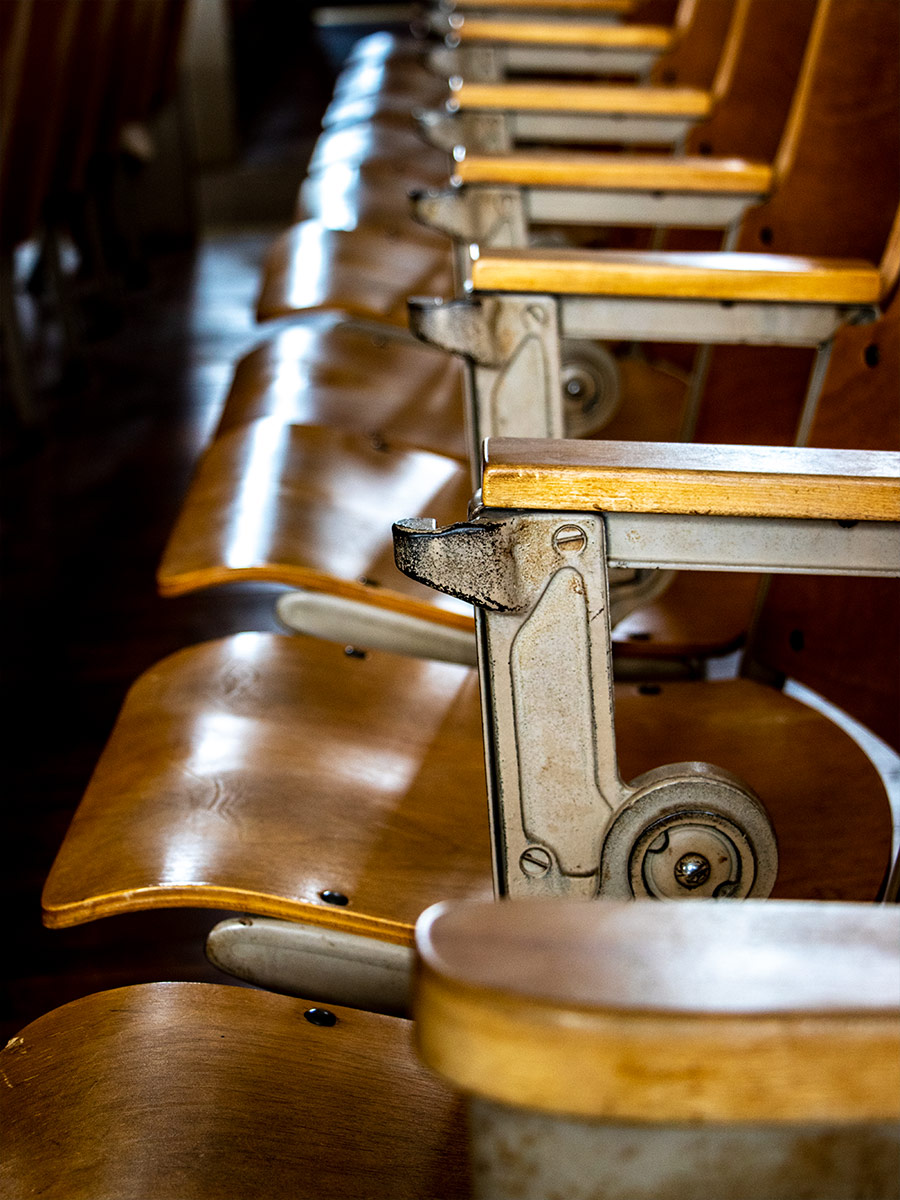
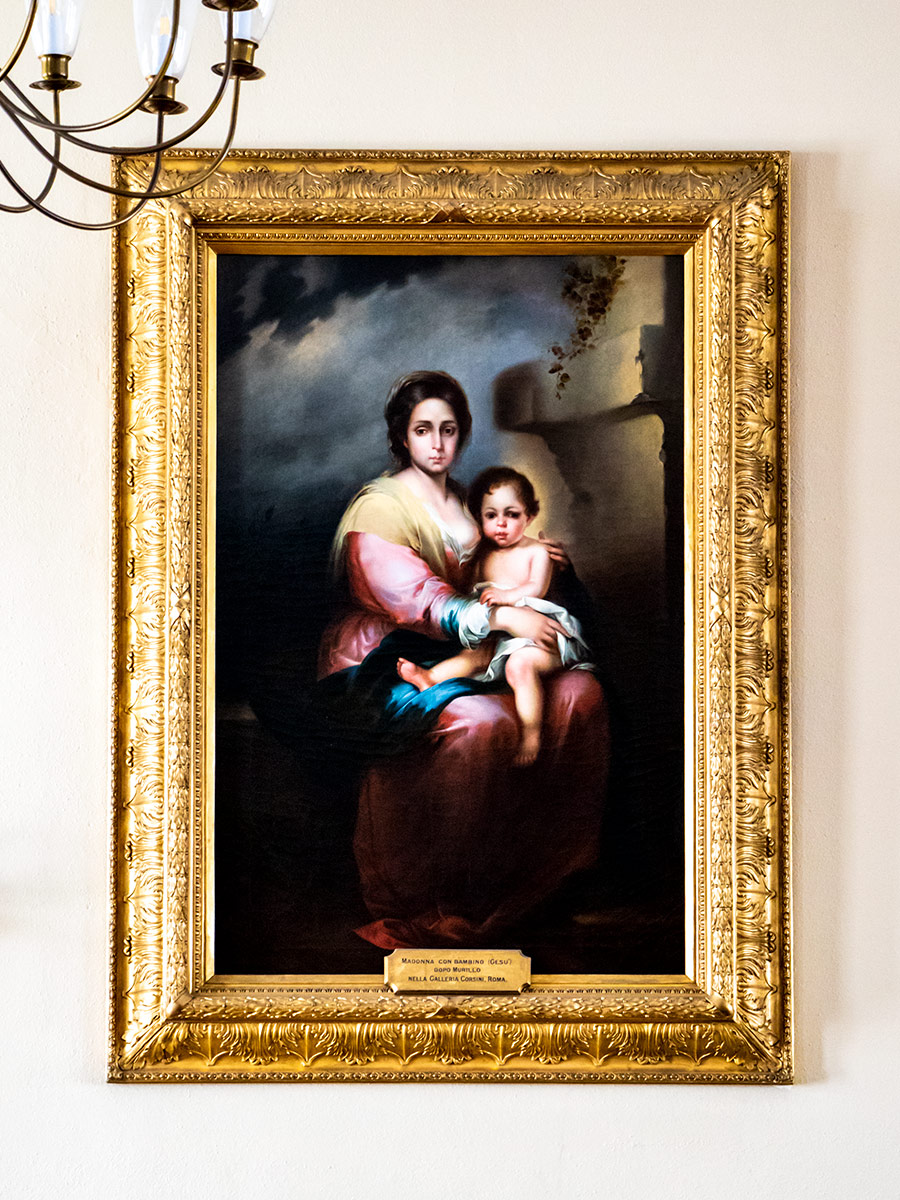

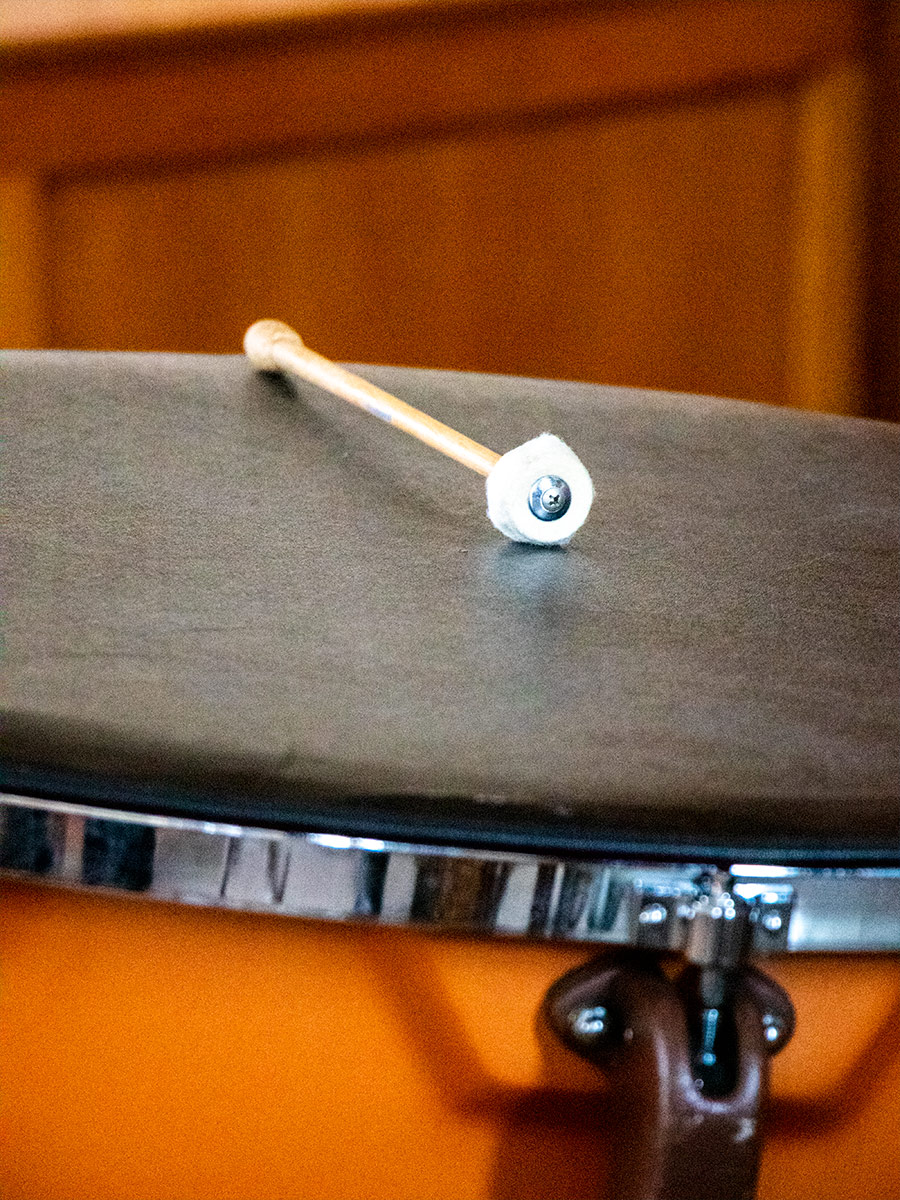

What an excellent surprise for what would have otherwise been an ordinary day. Between the art exhibit and exploring the auditorium, I’m not sure things could have gotten much better. Or could they have?
Merrill Hall
After about half an hour of taking pictures all alone in the large auditorium, which was rather strange (because no one seemed to mind), we left and walked around a few other halls of the building. I peeked through the door of one of the music rooms and found this:
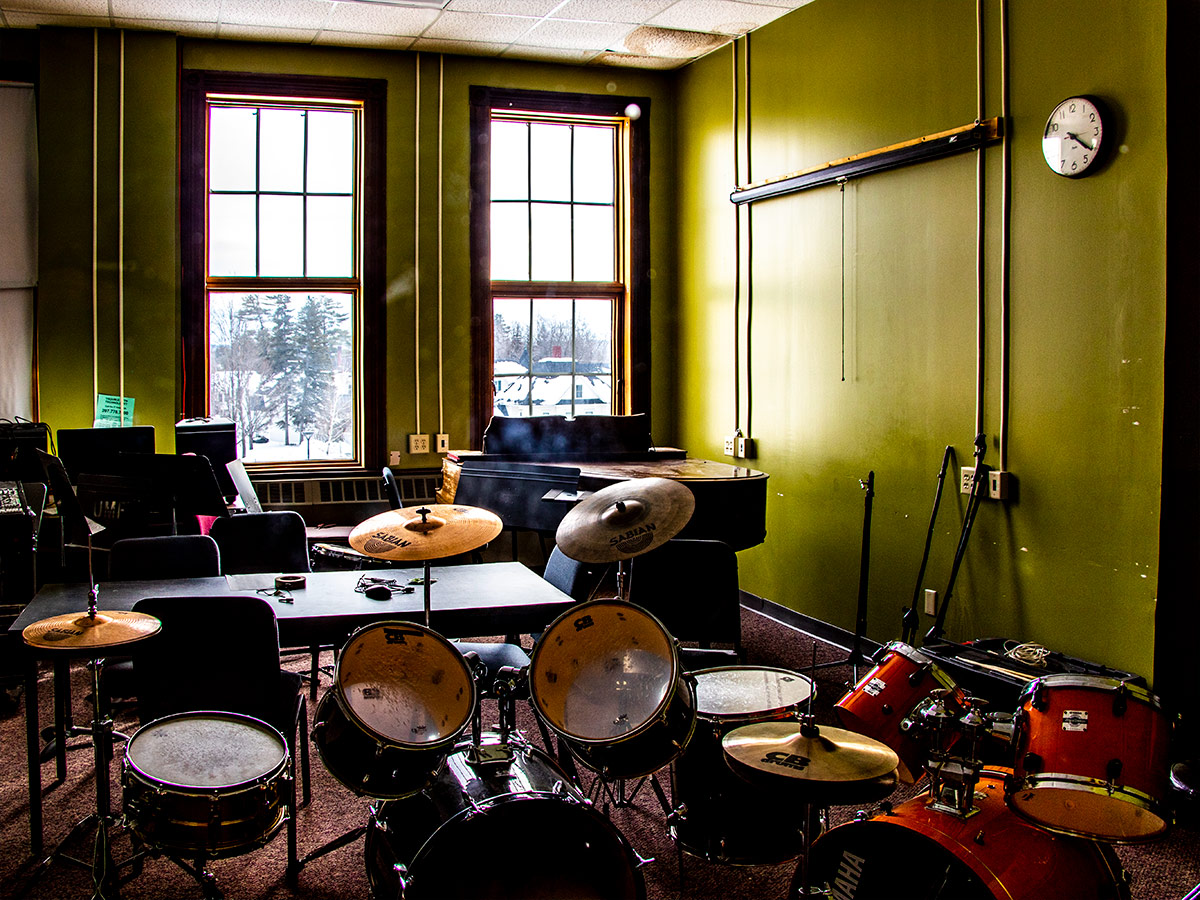
But what was most stunning was the architecture and woodwork of the front-most portion of the building. The first photo below is of the hallway that leads out through the front doors and the second photo is of the front stairway.
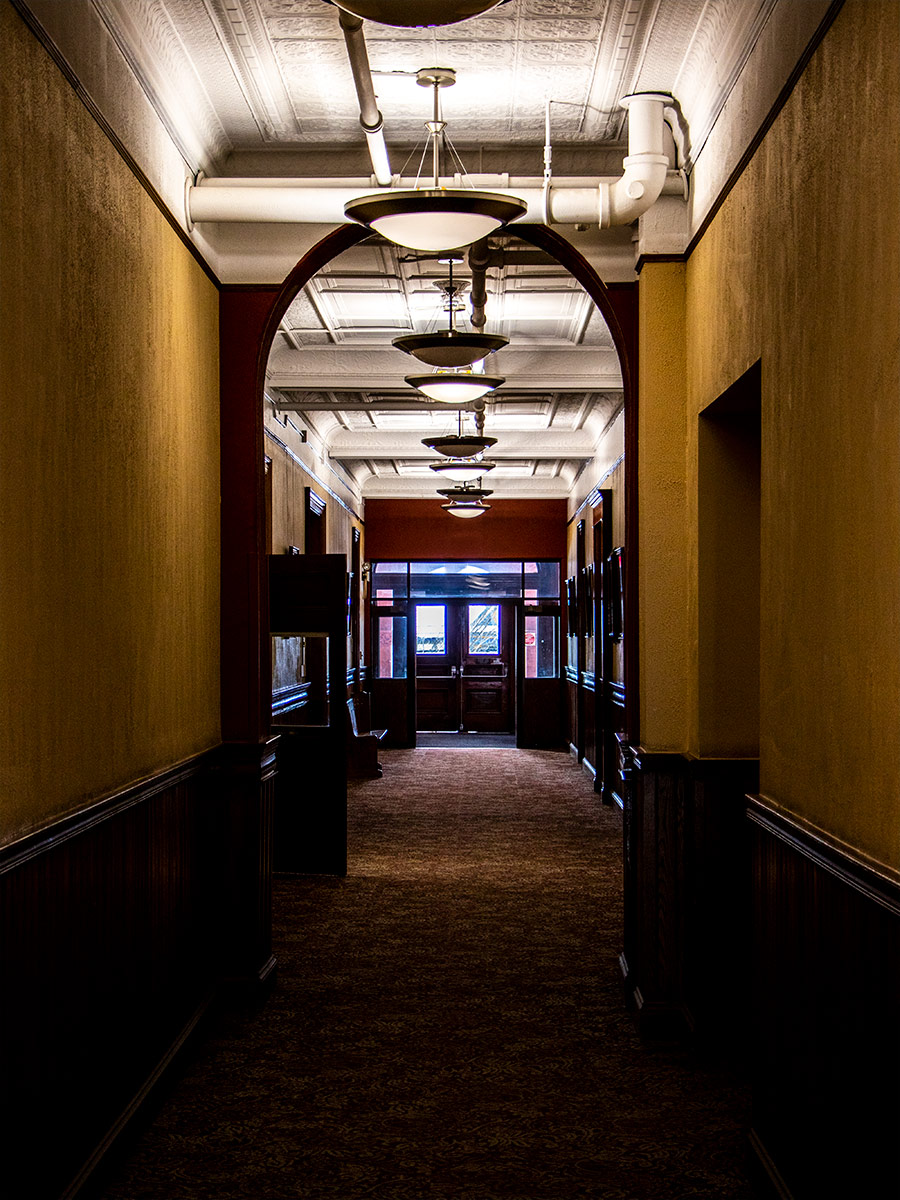
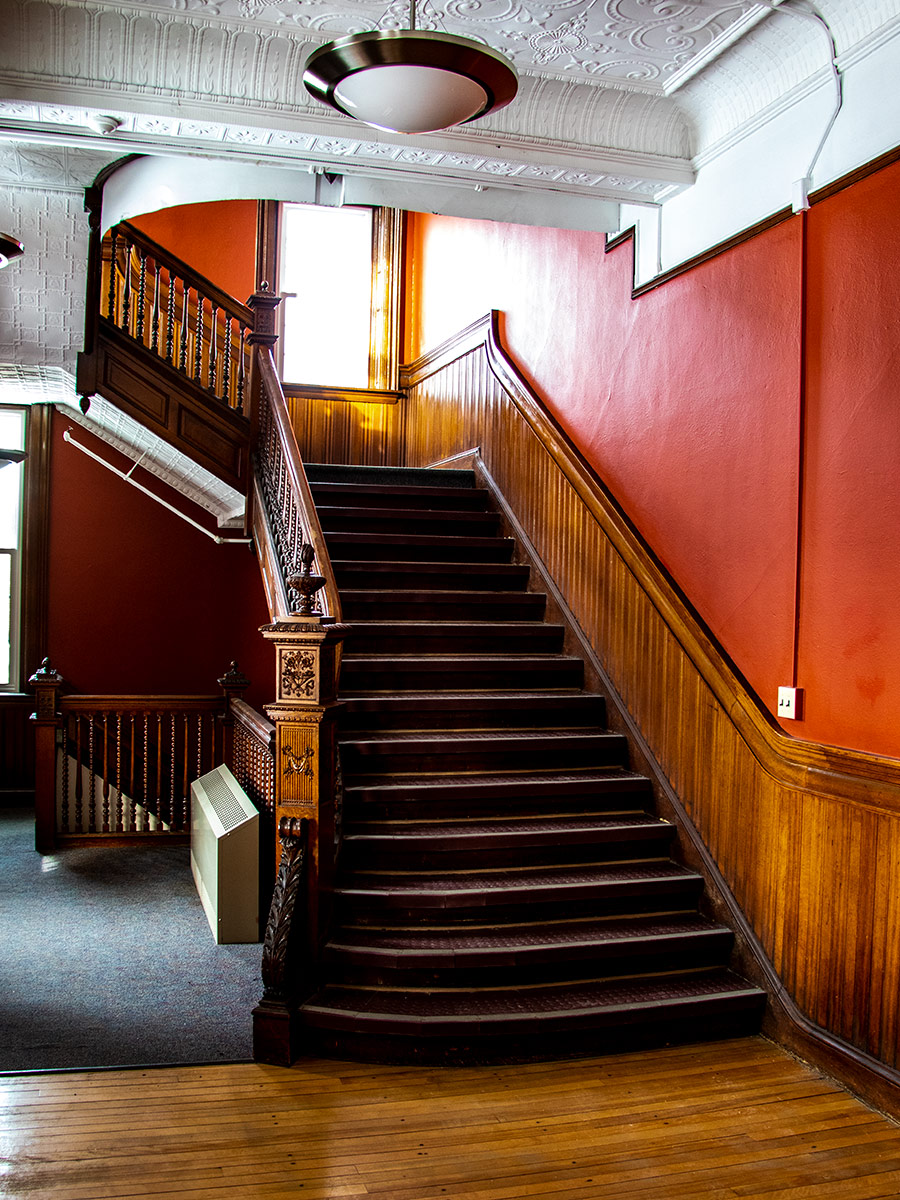
This is a photo of the lower staircase newel. Which brings me to my next topic.
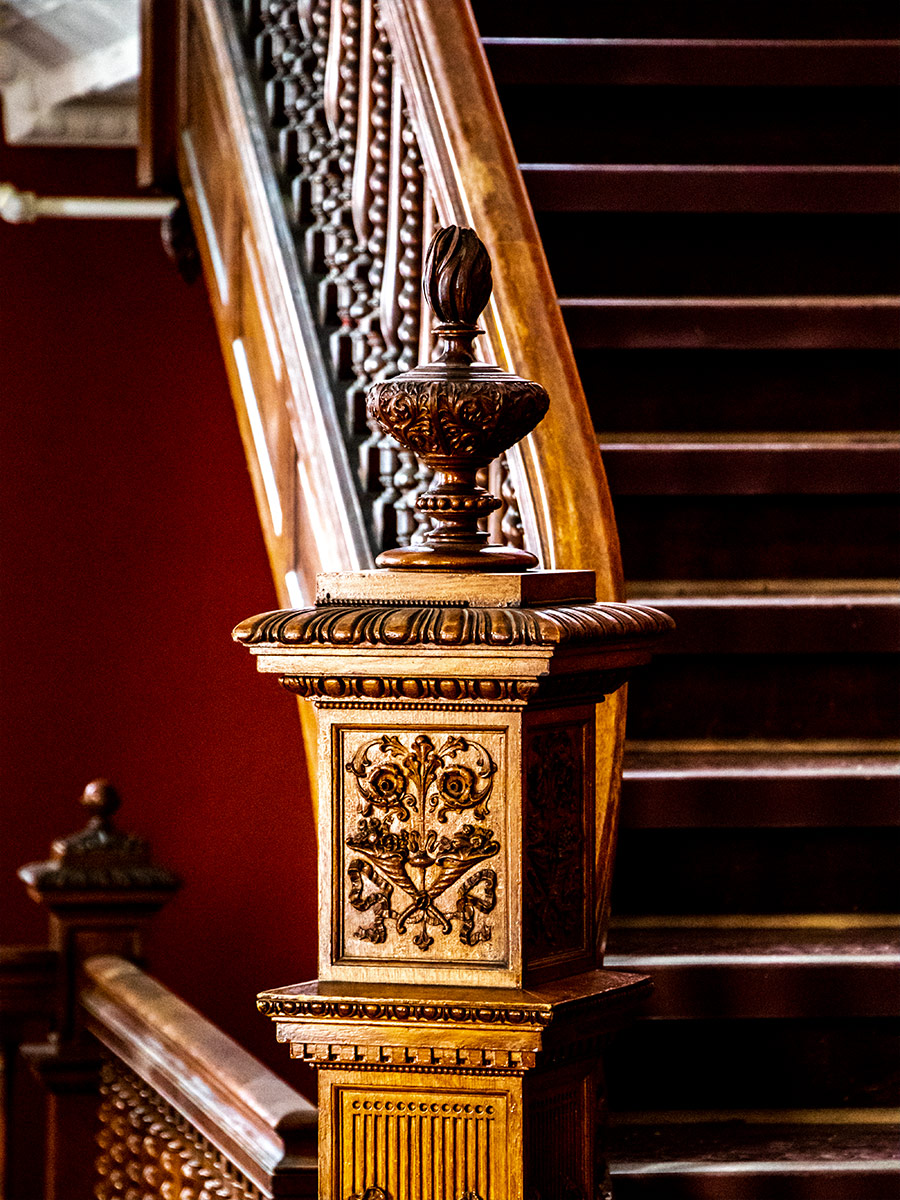
Keep this newel in mind when reading the section on aesthetics below.
Parts of a Staircase
I need to make a confession; I wasn’t aware of what this portion of a staircase was called before I began writing this post. As I mentioned above, it’s a newel, or otherwise known as a central pole or support column. It’s the primary supporting pillar of a staircase. It usually sits in a few locations; the very bottom of the staircase, upper corners if the staircase changes direction, as well as the very top. They’re sturdy and are meant for heavy use. These are the things that all the railings are connected to, so they’ve got to be strong.
When discussing stairs, I think most of us call whatever it is we hold onto the banister. We’re correct. The banister is the handrail we use for support. I generally go wrong when I refer to the entire side of a staircase as the banister. It’s not; just the handrail is. Then what are the other parts? Generally, there are two others. They are:
- Baluster – The spindles, or thin poles, that run vertically up and down the staircase are called balusters. These are primarily used for aesthetics as well as for safety.
- Balustrade – The balustrade is the entire ensemble; it includes the banister, the balusters, as well as the bottom railing. These days, instead of purchasing individual pieces, many people prefer to buy balustrades when building homes that include stairs. They save time and money.
So again, there are primarily four parts of a staircase; the newel, the banister, the baluster, and the balustrade. If you’re a normal person like I am and if you’ve seen pretty normal things throughout your life like I have, you most likely haven’t seen many overly ornate staircases in your day, unless, of course, you’ve toured buildings like Merrill Hall in Farmington or mansions like the Rockerfeller’s in Woodstock, Vermont. In some cases, the staircase of a home or building can be its primary focal point. It can be beautiful and it can cost tens of thousands of dollars and take hundreds of hours to complete. In other words, staircases hold the potential to be aesthetically pleasing. They can make you feel good while looking at them and they can change the way you feel about the world while walking up and down one. Odd? Yes. Human? Yes as well. Let me explain.
Why Aesthetics?
Simply put, the aesthetic of a thing is the beauty of a thing. If something is aesthetically pleasing, it looks good to the person who’s made the claim. To me, the newel in the image above is aesthetically pleasing. It encompasses both form with its intricate detail and accomplishes function by its boldness and strength. Obviously how good a thing looks will vary by person. We’ve all heard the phrase, “Beauty is in the eye of the beholder.” Different people see beauty in different ways.
The staircase above is beautiful. The Rotunda room in the library is beautiful, as is the Nordica Auditorium, and the paintings, and even the heating radiator contained within. The question I’ve had since I was a child is, while I certainly appreciate beautiful things, why make something beautiful at all? If a person creates something that works well and does what it’s supposed to do, why add additional flourishes and embellishments to it? Why make a car sleek and fast? Why add turrets, domes, and finials to a building when it can just as well function as a plain box? Why do people wear flashy clothes? Why do artists sculpt or paint? Why does any of this additional effort exist?
Take a look at this line: “Buildings that combine to create our urban landscape can provide pleasure that will soar or crash during a ride through London streets.”
I think I’ve finally found the answer and it has to do with being human.
Have you ever heard of dopamine? If not, dopamine is a neurotransmitter and hormone that acts on areas of the brain that control feelings of pleasure, satisfaction, and motivation. When dopamine is released into the brain, it can create feelings of happiness and gratitude akin to looking at someone or something you love. Think about being engrossed in a good book and then looking up to see your favorite person in the entire world walk through the door. Or at your favorite painting. Or your favorite food. In each instance, upon seeing something you love, or something that’s appealing, you’ll experience a dopamine release – a high. And this dopamine release is directly related to aesthetics.
It’s no accident that humans have been creating, or at the very least, attempting to imitate, beauty since the dawn of time. It’s something we do and it’s something we appreciate. It’s no accident you chose the car you drive. In some way or another, it was appealing to you. And if it wasn’t, I’m sure you’ve got one in mind that you’d love to own. Or at least a brand you love. It’s no accident that you love to look at stunning sunsets and English cottages. Or beautiful people. Or artwork. You’ve chosen each of these things to gaze upon because of their effect upon your brain. It’s the dopamine talking. And believe it or not, what you’re doing and experiencing is completely rational and even, dare I say, philosophical.
Plato’s most prominent contribution to aesthetics is his notion of mimesis (imitation). Mimesis derives from the idea that beautiful things are mere replicas of Beauty itself. So conceived, beautiful things participate in the Forms by means of imitation.
Aristotle was the first to qualify art as picturing more than we usually are meant to see, filling the gap between the sensual and the spiritual world. Aristotelian aesthetics includes concepts of reduction and selection of composition and emotion, thus a summarized view within any performance of poetics or painting.
If you aren’t familiar with the two gentlemen I mentioned in the above section, just know that Plato (c. 428–c. 348 BCE) and Aristotle (384–322 BCE) are widely regarded today as the two most prominent figures of Western philosophy. For over 20 years Plato was Aristotle’s teacher, mentor, and colleague at Plato’s The Academy. Aristotle studied under Plato before founding his own school called the Lyceum. Plato and Aristotle experienced what we call a philosophical departure, hence the founding of a subsequent institution. Nevertheless, the two men had much to say on the topic of aesthetics.
In philosophy, aesthetics is the study of nature and the appreciation of beauty. It studies the sublime, which can be summed up as greatness beyond all possibility of calculation, measurement, or imitation (Plato might try to imitate beauty, but according to this definition, he’ll never achieve his goal). Think of the most beautiful sunset you’ve ever seen, the most beautiful song you’ve ever heard, or the most beautiful person you’ve ever touched. The sublime refers to many things, but when we discuss aesthetics, we refer to things that make you lose your breath. Things you can’t explain.
To me, if something is to be aesthetically pleasing, it can be three things:
- Attractive
- Unique
- Functional
Being attractive is obvious. The thing must draw you in. Being unique is a must. Having more than one of the thing that draws you in can reduce its potential pleasure. It’s the functional part that’s difficult to explain. Yes, a beautiful car drives, but what’s the function of the Mona Lisa? I know the answer, do you?
I’ll end this post by saying that we’re not wrong for appreciating beauty or for having the desire to see things a certain way. Beauty goes hand in hand with taste and class. It’s highly rewarding to either situate certain elements of a thing so those elements either project beauty or to see beautiful elements and appreciate them so they give you the feeling. After all, if we remove the feeling from life, we’re not really living, are we?

This brings me to the end of another post. I sincerely hope you enjoyed it and, if so, I invite you to leave a comment down below to let me know your thoughts. It’s always nice to get feedback on the things I share.
Below are a few questions I’d like to ask you:
- Would you like to receive these posts via email? If so, you can sign up here. I send out a new post every single Monday morning, bright and early.
- Are you new here? Are you interested in reading through my entire list of posts that go way back? If so, you can start right here.
If you did any of these things, I can tell you right now that you’d truly make my day. Thank you so much and with that, I say adieu. Or at least, until next time.
PS – Can you do me a huge favor? Can you please share this page with someone you think might enjoy it? Here are some links to help you do that. Thank you!

Leave a Reply